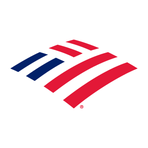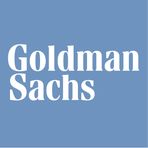Tariffs and Tumbles: The Tug-of-War in Today's Markets
April 15, 2025, 3:33 am

Location: United States, North Carolina, Charlotte
Employees: 10001+
Founded date: 1998
Total raised: $2M
The financial landscape is a battlefield. Tariffs are the artillery, and traders are the soldiers. Recent skirmishes between the U.S. and China have sent shockwaves through the markets. The impact? A rollercoaster ride for crude oil and stocks alike.
On April 10, 2025, crude oil futures took a nosedive. Prices fell more than 3% as traders reacted to President Trump's latest tariff announcements. The chaos of the U.S.-China trade war loomed large. Crude oil dropped $2.28, settling at $60.07 per barrel. Meanwhile, the global benchmark, Brent crude, lost $2.15, closing at $63.33. The market was a sea of red.
Just a day earlier, oil prices had surged. Trump had announced a temporary 10% tariff on most U.S. trade partners. Traders saw a glimmer of hope. West Texas Intermediate (WTI) swung wildly, closing at $62.35 per barrel. But that optimism was short-lived. The announcement of a staggering 145% tariff on China, the world's second-largest economy and biggest crude importer, sent prices spiraling down.
The market is a fickle friend. One moment, it offers a glimmer of hope; the next, it plunges into despair. Analysts warn that the chaos is far from over. The complexity of negotiating with multiple countries creates uncertainty. The market hates uncertainty.
Meanwhile, the stock market was experiencing its own drama. On the same day that crude oil fell, stocks soared. The S&P 500 posted its third-largest gain since World War II. This was no ordinary rally. It was fueled by a phenomenon known as a "short squeeze." Hedge funds, betting against stocks, were forced to buy back shares rapidly to limit their losses. The result? A surge in stock prices that caught many off guard.
Traders had piled on short bets against U.S. stocks, anticipating a downturn. But when news of the tariff pause broke, panic set in. Hedge funds scrambled to cover their positions. The S&P 500 jumped 9.5%, while a basket of the most shorted stocks soared by 12.5%. It was a sight to behold.
Volume on U.S. exchanges hit a staggering 30 billion shares, the heaviest trading day on record. The market was alive, electric with activity. But beneath the surface, anxiety simmered. The thin liquidity of the market amplified price swings. Traders felt the tension. They knew the risks.
The duality of the market is striking. On one hand, you have the relentless push of tariffs and trade wars. On the other, the exhilarating rush of stock rallies driven by short covering. It’s a dance of chaos and opportunity. Yet, as the dust settles, the reality remains: the economy is still vulnerable.
Investors are left grappling with the fallout. The uncertainty surrounding high tariffs on China looms large. The fear of recession hangs in the air like a dark cloud. Traders are wary. They know that the market can turn on a dime. One misstep, one unexpected announcement, and everything can change.
Analysts are divided. Some see the potential for recovery, while others warn of further declines. The short positions still lingering in the market could fuel another wave of volatility. If the market begins to rally again, those shorts may find themselves in a tight spot once more.
The tug-of-war between optimism and pessimism is palpable. The market is a living organism, constantly evolving. Traders must adapt or risk being left behind. The landscape is littered with opportunities, but also with pitfalls.
As the U.S. navigates its trade relationships, the stakes are high. Tariffs can reshape industries, pushing companies to reconsider their strategies. Some may benefit from the chaos, while others may falter. The energy sector, in particular, is feeling the heat. With tariffs on imports, companies must rethink their supply chains.
In this high-stakes game, information is power. Traders must stay informed, ready to pivot at a moment's notice. The market is a chessboard, and every move counts. The players are strategizing, calculating risks, and weighing potential rewards.
In conclusion, the current market landscape is a complex tapestry woven with threads of uncertainty and opportunity. Tariffs are the wild card, influencing everything from crude oil prices to stock market rallies. As traders navigate this tumultuous terrain, they must remain vigilant. The market is a fickle beast, and only those who adapt will thrive. The dance of the markets continues, and the next move is anyone's guess.
On April 10, 2025, crude oil futures took a nosedive. Prices fell more than 3% as traders reacted to President Trump's latest tariff announcements. The chaos of the U.S.-China trade war loomed large. Crude oil dropped $2.28, settling at $60.07 per barrel. Meanwhile, the global benchmark, Brent crude, lost $2.15, closing at $63.33. The market was a sea of red.
Just a day earlier, oil prices had surged. Trump had announced a temporary 10% tariff on most U.S. trade partners. Traders saw a glimmer of hope. West Texas Intermediate (WTI) swung wildly, closing at $62.35 per barrel. But that optimism was short-lived. The announcement of a staggering 145% tariff on China, the world's second-largest economy and biggest crude importer, sent prices spiraling down.
The market is a fickle friend. One moment, it offers a glimmer of hope; the next, it plunges into despair. Analysts warn that the chaos is far from over. The complexity of negotiating with multiple countries creates uncertainty. The market hates uncertainty.
Meanwhile, the stock market was experiencing its own drama. On the same day that crude oil fell, stocks soared. The S&P 500 posted its third-largest gain since World War II. This was no ordinary rally. It was fueled by a phenomenon known as a "short squeeze." Hedge funds, betting against stocks, were forced to buy back shares rapidly to limit their losses. The result? A surge in stock prices that caught many off guard.
Traders had piled on short bets against U.S. stocks, anticipating a downturn. But when news of the tariff pause broke, panic set in. Hedge funds scrambled to cover their positions. The S&P 500 jumped 9.5%, while a basket of the most shorted stocks soared by 12.5%. It was a sight to behold.
Volume on U.S. exchanges hit a staggering 30 billion shares, the heaviest trading day on record. The market was alive, electric with activity. But beneath the surface, anxiety simmered. The thin liquidity of the market amplified price swings. Traders felt the tension. They knew the risks.
The duality of the market is striking. On one hand, you have the relentless push of tariffs and trade wars. On the other, the exhilarating rush of stock rallies driven by short covering. It’s a dance of chaos and opportunity. Yet, as the dust settles, the reality remains: the economy is still vulnerable.
Investors are left grappling with the fallout. The uncertainty surrounding high tariffs on China looms large. The fear of recession hangs in the air like a dark cloud. Traders are wary. They know that the market can turn on a dime. One misstep, one unexpected announcement, and everything can change.
Analysts are divided. Some see the potential for recovery, while others warn of further declines. The short positions still lingering in the market could fuel another wave of volatility. If the market begins to rally again, those shorts may find themselves in a tight spot once more.
The tug-of-war between optimism and pessimism is palpable. The market is a living organism, constantly evolving. Traders must adapt or risk being left behind. The landscape is littered with opportunities, but also with pitfalls.
As the U.S. navigates its trade relationships, the stakes are high. Tariffs can reshape industries, pushing companies to reconsider their strategies. Some may benefit from the chaos, while others may falter. The energy sector, in particular, is feeling the heat. With tariffs on imports, companies must rethink their supply chains.
In this high-stakes game, information is power. Traders must stay informed, ready to pivot at a moment's notice. The market is a chessboard, and every move counts. The players are strategizing, calculating risks, and weighing potential rewards.
In conclusion, the current market landscape is a complex tapestry woven with threads of uncertainty and opportunity. Tariffs are the wild card, influencing everything from crude oil prices to stock market rallies. As traders navigate this tumultuous terrain, they must remain vigilant. The market is a fickle beast, and only those who adapt will thrive. The dance of the markets continues, and the next move is anyone's guess.

